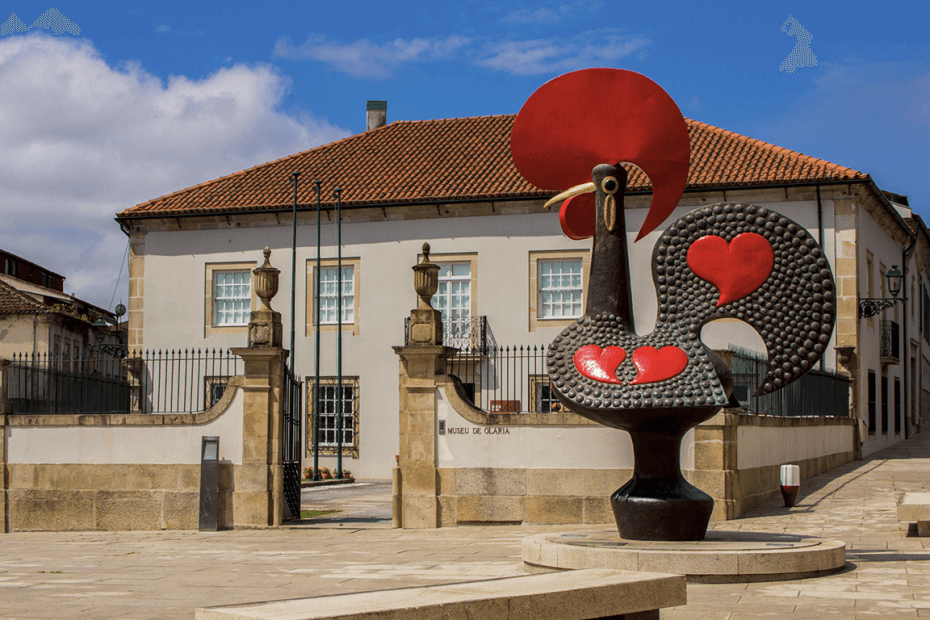The Museum of Olaria is a national reference in the preservation and promotion of Portuguese ceramics. With over 60 years of history, this municipal museum in Barcelos houses one of the richest and most diverse collections of popular pottery in the country.
Origins
The museum’s story begins in the 1940s, when the Barcelos City Council carried out works in the Paço dos Condes de Barcelos, creating a small subterranean hall. A few years later, in the early 1950s, ethnographer Joaquim Sellés Paes donated to the council his outstanding collection of over 700 ceramic pieces and related artifacts, gathered from various Portuguese pottery centres—especially Barcelos. This donation formed the very first core of the museum’s collection.
Inauguration and Early Years
Officially opened to the public on 4 May 1963 during the Festas das Cruzes, the institution was first named the Regional Museum of Ceramics. A year later, Eugénio Lapa Carneiro, a technical education teacher at Barcelos Industrial and Commercial School, was appointed director. As the collection grew and its geographic scope broadened, the museum was renamed Museum of Portuguese Popular Ceramics. For decades it operated in the cramped underground hall beneath the Paço dos Condes, its space increasingly insufficient for a constantly expanding collection.
A New Home
In the early 1980s, the City Council decided that a larger venue was needed. In 1982, work began to adapt the former industrial and commercial school building—known as the Casa dos Mendanhas Benevides Cyrne—into a proper museum facility. At that time, the institution adopted its current name, Museum of Olaria. After extensive renovations and the transfer of its collection, the new museum opened on 29 July 1995. Two years later, in 1997, the Educational Service was launched, offering pedagogical activities for schools, families, and the broader community. But the tourists just call it “Barcelos Rooster Museum” because of the giant statue at the door.
Growth and Recognition
As the new millennium dawned, the Museum of Olaria joined the Portuguese Museum Network, reinforcing its national museological role. In 2013, following major expansion and refurbishment, it reopened on 31 August with a larger permanent exhibition area, better meeting contemporary curatorial standards and visitor needs.
In 2018, Barcelos co‑founded the Portuguese Association of Cities and Towns of Ceramics (AptCVC), with the Museum of Olaria serving as its main link. The following year, the museum was admitted to the International Academy of Ceramics, one of the world’s most prestigious bodies in this field.
A Living History
The COVID‑19 pandemic (2020–2022) imposed restrictions on the museum’s operations, yet its mission endured. In 2023, marking its 60th anniversary, the museum inaugurated the new permanent exhibition “Pottery of Portugal,” celebrating the nation’s ceramic heritage. In 2024, the AptCVC awarded the Museum of Olaria the Ceramics Medal, in recognition of over sixty years dedicated to culture and heritage.
Today, the collection has grown from its original 700 pieces to approximately 11 000 items, making the Museum of Olaria an essential institution for the study, preservation, and promotion of Portuguese ceramics, serving Culture, Education, and Heritage.
Other Things to See and Do in Barcelos
In addition to the Barcelos Rooster Museum, there are a number of other things to see and do in Barcelos. These include:
- The Church of Santiago: This church is where the legend of the Barcelos Rooster is said to have taken place.
- The Barcelos Market: This market is a great place to buy souvenirs and local produce.
- The Barcelos Castle: This castle was built in the 14th century and offers stunning views of the town.
- The Barcelos Botanical Garden: This garden is home to a variety of plants and flowers from around the world.
